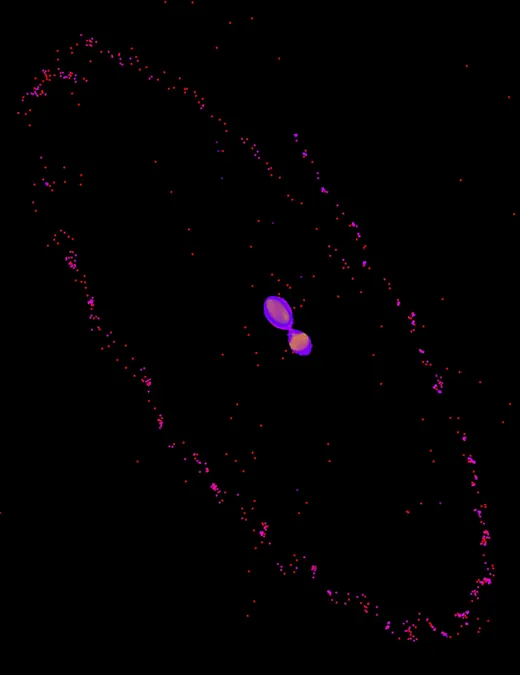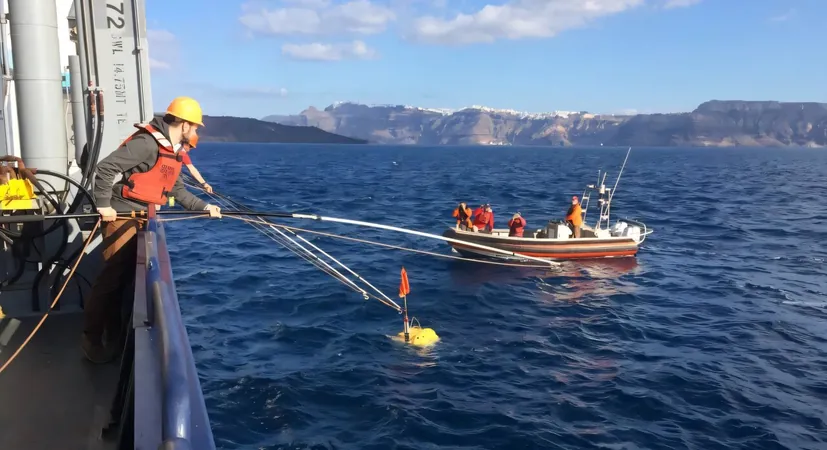
Shocking New 'Kiss and Capture' Mechanism Reveals Secrets of Pluto and Charon's Origins!
2025-01-06
Author: Emily
Revolutionary Discovery by University of Arizona Researchers
In a groundbreaking new study, researchers from the University of Arizona have unveiled an astonishing mechanism behind the formation of Pluto and its largest moon, Charon. Here's the twist: instead of a cataclysmic collision, these two icy bodies underwent a unique 'kiss and capture' event billions of years ago in the cold, distant regions of our solar system.
Challenging Long-Standing Beliefs
Led by Adeene Denton, a NASA postdoctoral fellow, this research challenges long-standing beliefs held by scientists about how planetary bodies are created and evolve. For decades, it was thought that Charon formed similarly to Earth's moon through massive impacts and resulting deformations. However, this new study points out that the distinct properties of Pluto and Charon—being smaller, colder, and composed mainly of rock and ice—were overlooked in previous models.
Advanced Impact Simulations
Denton's team conducted advanced impact simulations using high-performance computing resources, which revealed a fascinating outcome during the initial collision. Rather than behaving like liquid bodies that stretched and deformed, Pluto and proto-Charon temporarily fused together, ultimately separating but remaining trapped in a gravitational bond, much like a pair of ice dancers twirling together.
The 'Kiss and Capture' Scenario
This revolutionary 'kiss and capture' scenario deviates from the common collision models classified as 'hit and run' or 'graze and merge.' The findings suggest that the two celestial bodies remained largely intact throughout the collision, preserving much of their original material. This overturns traditional models that expected extensive deformation or blending during such impacts.
Implications for Subsistence Oceans
But that's not all! The study also implies that the collision generated significant internal heat through tidal friction, opening up the possibility that Pluto could harbor a subsurface ocean, challenging prior assumptions that this feature required formation in a highly radioactive early solar system.
Future Research Directions
With the implications of this research far-reaching, Denton and her team are already gearing up for follow-up studies. They plan to delve deeper into how tidal forces influenced the early evolution of Pluto and Charon, investigate how their formation aligns with Pluto's current geological features, and explore whether this unique formation mechanism could apply to other known binary systems in our solar system.
Conclusion: Rethinking Cosmic Collisions
Could this rethinking of cosmic collisions reshape our understanding of planetary formation in general? Only time—and further research—will tell! Stay tuned for more exciting updates from the frontiers of space exploration!









 Brasil (PT)
Brasil (PT)
 Canada (EN)
Canada (EN)
 Chile (ES)
Chile (ES)
 Česko (CS)
Česko (CS)
 대한민국 (KO)
대한민국 (KO)
 España (ES)
España (ES)
 France (FR)
France (FR)
 Hong Kong (EN)
Hong Kong (EN)
 Italia (IT)
Italia (IT)
 日本 (JA)
日本 (JA)
 Magyarország (HU)
Magyarország (HU)
 Norge (NO)
Norge (NO)
 Polska (PL)
Polska (PL)
 Schweiz (DE)
Schweiz (DE)
 Singapore (EN)
Singapore (EN)
 Sverige (SV)
Sverige (SV)
 Suomi (FI)
Suomi (FI)
 Türkiye (TR)
Türkiye (TR)
 الإمارات العربية المتحدة (AR)
الإمارات العربية المتحدة (AR)